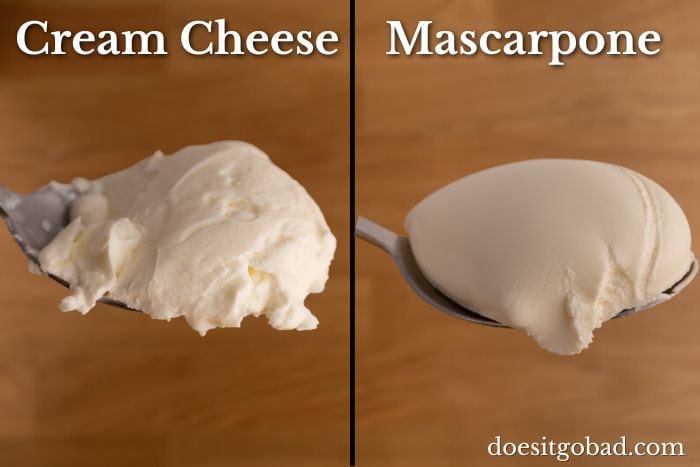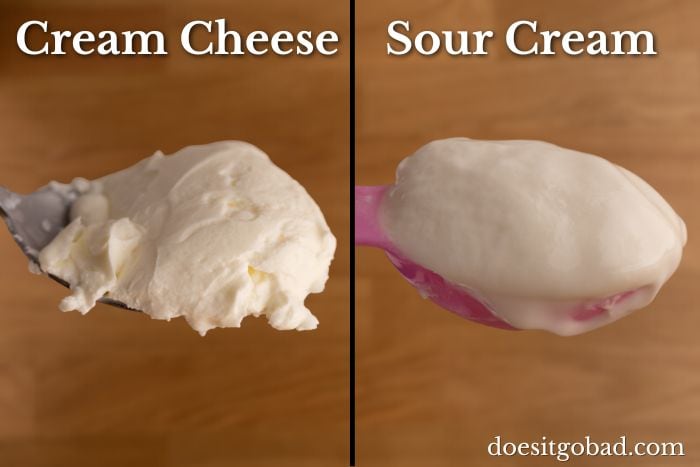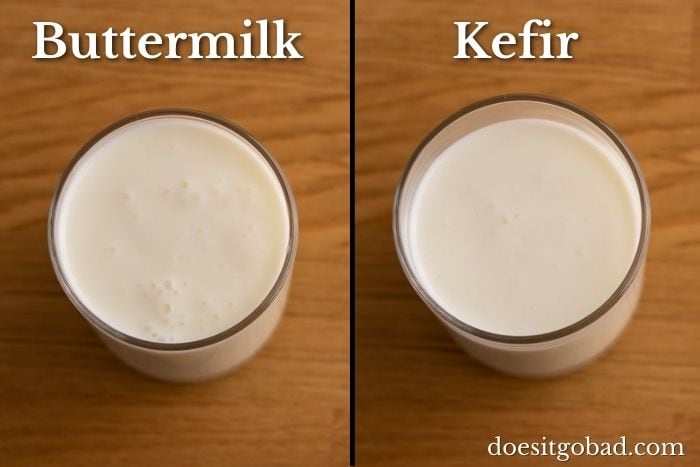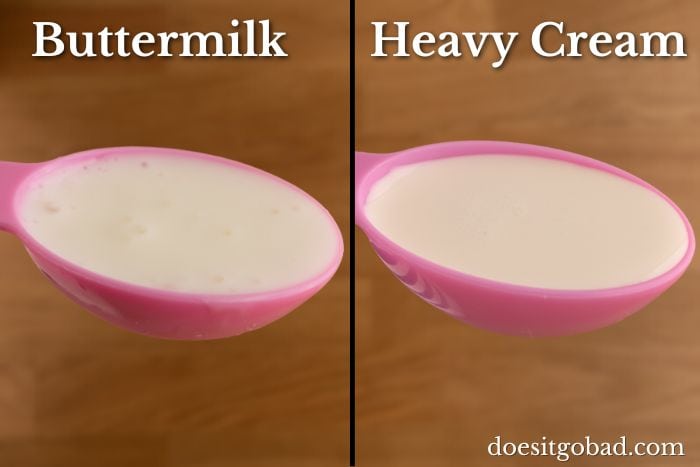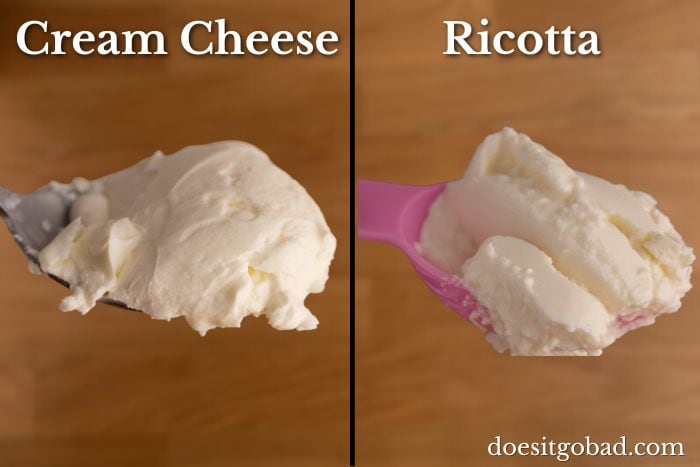Ricotta vs. Mascarpone: Similarities, Differences, and When to Sub
Here’s all about the similarities and differences between ricotta and mascarpone. Learn how they differ and when you can substitute one for the other.
So you need ricotta for a recipe, but the closest thing you’ve got is a tub of mascarpone. Can you substitute mascarpone for ricotta?
Or you want to make a dessert or one of the popular Italian dishes that require mascarpone, but you only got ricotta on hand. And you’re wondering if you can sub it in.
If you’re interested in subbing one for the other, or you’d like to learn how ricotta and mascarpone compare in taste, texture, uses, nutrition, or production, this article is for you.
Let’s jump right in.
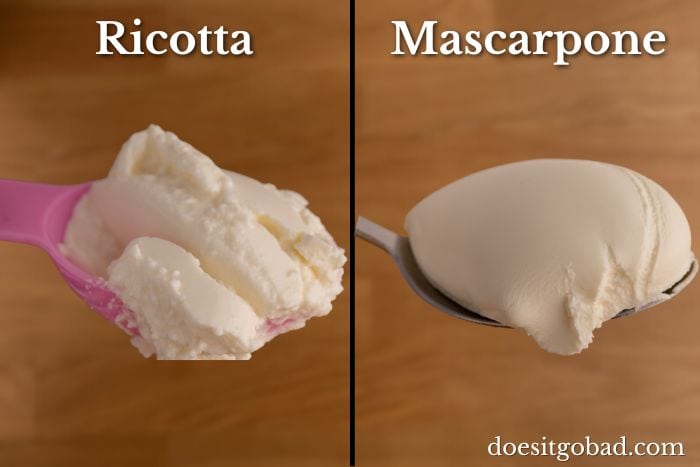
When to Substitute
Both mascarpone and ricotta are fresh Italian cheeses, but they’re quite different, and you can’t use them interchangeably. They can work as substitutes only in specific settings.
Let’s get into the details.
Can I Use Mascarpone Instead of Ricotta?
You can substitute mascarpone for ricotta in some cooked or baked dishes, but never if ricotta is used on its own.
Mascarpone is much richer and creamier, so you might add a splash of milk to thin it out. And possibly limit other fat sources in the recipe (e.g., by using less butter or oil), as mascarpone has about four times more fat than ricotta.
Furthermore, it’s probably best to sub mascarpone in sweet dishes, such as cakes, desserts, etc. Mascarpone is a natural fit for those, so subbing should work okay, assuming you follow the advice above.
Another area where using mascarpone instead of ricotta should work okay is casseroles. You can easily find lasagna recipes with mascarpone or ones where you combine both kinds of cheese.
Again, remember that mascarpone is richer and denser compared to ricotta, so the dish will turn out much heavier if you don’t adjust other ingredients and dilute mascarpone with milk or water.
Last but not least, if the recipe uses ricotta as-is (say, in toasts slathered with ricotta and topped with smoked salmon), using mascarpone, even thinned out, will yield much different results. So if you’re not feeling particularly adventurous, it’s better to avoid it.
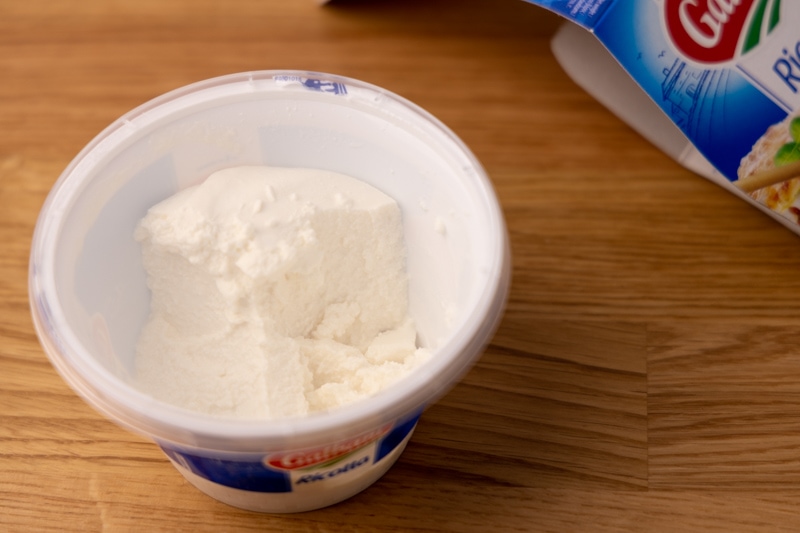
Can I Substitute Ricotta for Mascarpone?
You can use ricotta instead of mascarpone in a variety of dishes. Start by straining the ricotta and whipping it using a hand mixer or a spatula. What you’ll get is ricotta that’s relatively similar to cream cheese, which isn’t that far away from mascarpone.
(Mascarpone is an Italian version of cream cheese that’s richer and silkier than regular cream cheese sold in the US.)
To get the ricotta even closer to mascarpone, add a couple of tablespoons of heavy cream and whip it using a hand mixer. That should make the ricotta more smooth and start to look more like mascarpone.
After that treatment, ricotta should work okay in cooked dishes where you combine mascarpone with other ingredients and (possibly) cook or bake it.
But if it’s a frosting, topping, or a simple dessert with fresh fruit and honey, I suggest you wait until you actually have mascarpone on hand. The difference in texture will still be noticeable and affect the outcome.
Overall, it’s impossible to find a perfect mascarpone substitute, so it shouldn’t be a surprise ricotta isn’t one. Even cream cheese isn’t a great mascarpone substitute in many settings.
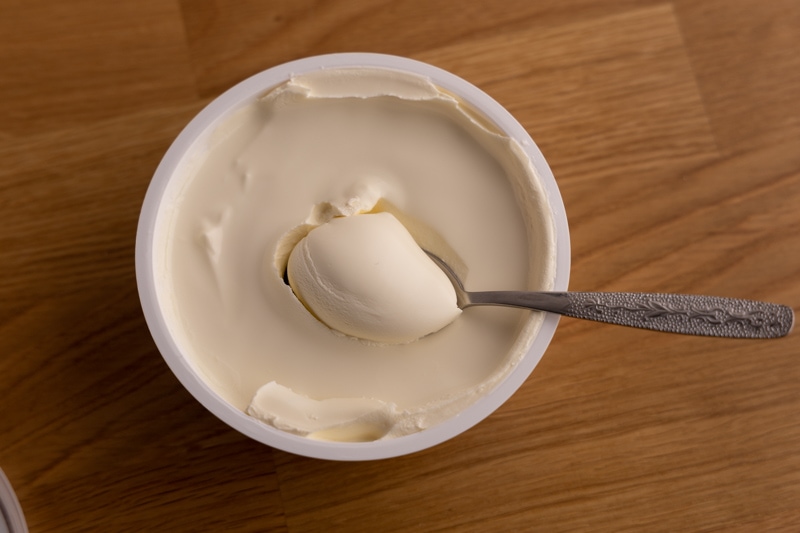
Ricotta vs. Mascarpone: Differences and Similarities
Now that you know how subbing ricotta for mascarpone and the other way around works, let’s talk about the similarities and differences between the two in a few important aspects.
Taste and Texture
Both ricotta and mascarpone are milky-white and slightly sweet, though mascarpone is somewhat sweeter, but that’s where the similarities end. Here’s how they compare visually:
Ricotta is a bit grainy. Not nearly as grainy as cottage cheese, but still. On the other hand, mascarpone is easily spreadable and rocks its signature silky smooth consistency.
You can, of course, strain the ricotta using a fine mesh strainer or a cheesecloth (or both) and whip it, but it’s still not going to be nearly as smooth as mascarpone.
Next, ricotta is watery and feels quite light compared to mascarpone. You can thin it out by stirring in a bit of milk or water, but you won’t achieve exactly the same texture. Mascarpone is too rich and heavy, richer than regular cream cheese.
So you can try to bridge the gap between the two using the methods I described, and that’s enough for many recipes. But no matter how hard you try, one will never be a direct substitute for the other.
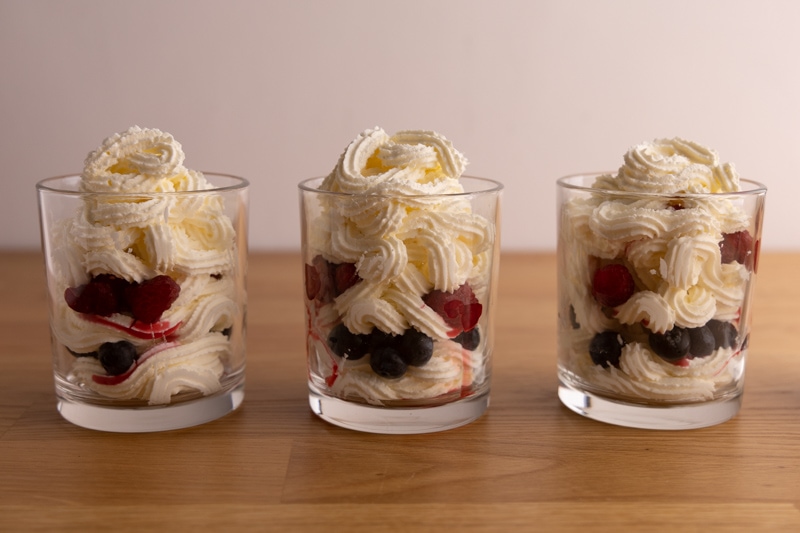
Uses
| Ricotta | Mascarpone |
|---|---|
| Lasagna, ravioli, and other pasta dishes | Tiramisu |
| Melting on pizza, calzone, etc. | Cake toppings |
| Dips (whipped ricotta + herbs and aromatics) | Desserts with fruits |
| Spreading on bagels, bread, and the like | Pies and tarts |
| Salads | Casseroles like lasagna, mac & cheese |
| Pancakes, crepe filling | |
| Cheesecake |
Ricotta cheese is much more versatile than mascarpone. It’s used in sweet dishes such as cheesecakes, crepes, and the like, but it’s popular in savory ones too. Lasagna, ravioli, pizza, and calzone first come to mind, as ricotta originates in Italy.
Due to its creaminess and sweetness, mascarpone is most often used in desserts (think tiramisu), pies, and cake toppings.
That said, mascarpone also works well in casseroles like lasagna or mac & cheese. Its sweetness usually isn’t a huge issue in those because it’s balanced out by acidic ingredients, such as the tomato sauce in lasagna.
The differences in uses should explain why we consider mascarpone a specialty product, while ricotta is more of an everyday fresh cheese that one can use in gazillion ways.
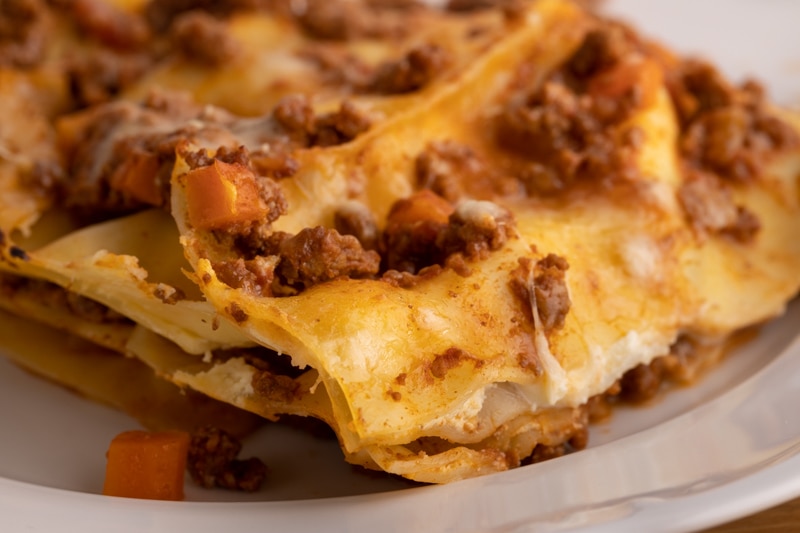
Nutrition
The macronutrient profiles of ricotta and mascarpone are quite different. Here’s what they look like (per 100g):
| (per 100g) | Ricotta [source] | Mascarpone [source] |
|---|---|---|
| Energy | 158 kcal | 400 kcal |
| Protein | 7.81g | 3.33g |
| Fat | 11g | 40g |
| Carbohydrates | 6.86g | 3.33g |
The main difference between ricotta and mascarpone, in terms of nutrition, is the fat content. Mascarpone contains about four times more fat than full-fat ricotta, which makes mascarpone much heavier and creamier than ricotta.
There are also some differences in amounts of proteins and carbs, but they’re negligible compared to the massive difference in fat.
Plus, the numbers vary a bit between different brands. So if, for instance, you care about your protein intake, go through the labels of all available brands and choose one with the highest amount.
Mascarpone traditionally comes with a fat content of between 52 and 54 percent, so the difference between the two is usually even more pronounced than what you see in the table above.
The mentioned differences in macronutrients result in mascarpone having more than double the calories of ricotta.
So if you’re watching your calories, limiting how much mascarpone you eat might be a smart thing to do. And so is trying to substitute it with other cheeses whenever possible.
And if subbing doesn’t seem like a good idea, consider looking for a similar recipe that uses ricotta or cream cheese instead.
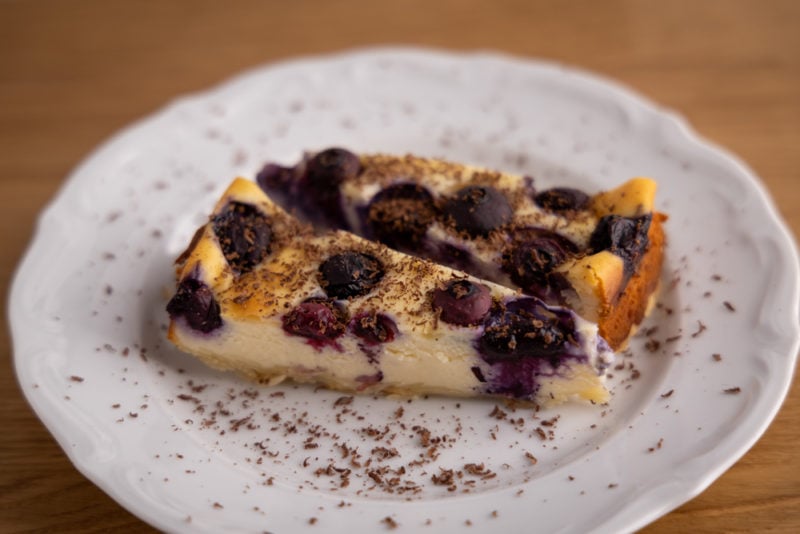
Production
The production processes of mascarpone and ricotta are very different.
Mascarpone is fairly straightforward to make. You start by combining heavy cream and milk at an appropriate ratio, heat up the mixture, and add an acid such as cream of tartar, citric acid, or even lemon juice.
The combination of heat and acid thickens the mixture. The final step is to drain the whey and collect the curd. That curd, after a bit of processing, is your mascarpone.
Ricotta isn’t a typical cheese, as it’s made from whey. The same whey that’s drained during the cheese-making process I described above. That makes ricotta almost a byproduct – you can’t make it unless you make another cheese first.
To make ricotta, the previously drained whey is mixed with salt, water, milk, and some fermented whey. That mixture is then heated up, and it starts to curdle after a while. The curds rise to the surface and are then collected. After some processing, they end up in your ricotta tub.
Ricotta is usually made from whey leftover after making one of the milk-based cheeses, such as mozzarella. Mascarpone starts with cream and only a tiny amount of milk (if any), so it’s usually not the case that ricotta is made using whey drained from mascarpone. Just wanted to clear that up.
That’s a high-level overview of how both Italian kinds of cheese are made.
Rotten Records: Share Your Snap!
Caught some food past its prime? Upload your photo to “Rotten Records” and help others spot the signs of spoilage. Every image makes our food community safer and more informed!
